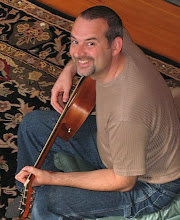Telematics Detroit was, for us, a good event again this year. The
Jeep was a great success, with lots of people filling all four seats on a
pretty constant basis, and lots of people waiting to see what HTML5 really can
do. The show was busy and loud, even if you don't include the car alarm
going off near the end of the event. In the quiet of my hotel room, away
from the clamour, I reflected on the event and came up with two main
observations.
1) Telematics Detroit's main value is in networking. For industry
old timers like me, it's always like a big reunion party. It was great to
see old friends from jobs long ago, friends who have done business with QNX for
many years, and friends who have never done business with QNX but love us all
the same. It was great to build on our existing partner relationships,
and to work on blossoming new ones. It's great to catch up with people,
building up your own business-card sized slice into their personal career trajectory
More than ever, it's clear that the car app has finally taken hold. I
talked to many mobile developers who are targeting the car; we're helping them
figure out how to bridge the mobile-car gap.
An anecdote shows how important networking is to this
event. The Telematics Update party sponsored by Slacker had two live
bands, an open bar, and cheerleaders milling through the crowd.
Telematics and Tonics (the event brought to life by my good friend and
former boss John Correia, and sponsored by QNX, Agero, and Tweddle) was held at
the same time across the street. We didn’t have a live band, an open bar,
or cheerleaders, but people still found our party a great place to mix and
mingle.
2) I think that the sessions at many auto events need a face lift.
This isn't just about Telematics Update—it's a reflection of many shows
I've been to lately. I heard from a few people that they had walked out
of talks after the first couple minutes, or that they generally thought the
content of the sessions or the panels was not as valuable as they could be. Having
done panels (yes, I did one this time) and speaking engagements (no, I didn't
do one this time) at many shows, I think I can shed some light on why this is.
Every show has to organize months in advance, so abstracts are
created months earlier, which allows them to schedule and print show guides,
etc. With this model, you're planning for what's going to be discussed
several months ahead of time. Is this time lag critical? Sometimes
it can be—if you're working in a fast paced industry, it may mean you're not
going to be able to talk about something brand new.
There’s a bigger problem: the people you invite to speak are
industry experts. And experts are in high demand. Which means that
they're multi-tasking and being pulled in many different directions all the
time. The show content they need to deliver is just a small fraction of what
they need to output each and every day. As it's so far in the future, it often
gets prioritized low on the list, often only getting completed days (or hours)
before the show. Old material is often recycled, the presentation may be
unpolished, and the slides may be uninteresting. This lack of ability to
put quality time into creating a clear and concise message and refining
it generally leads to presentations that are difficult to follow, or that
add little value.
What would help? I can think of a couple things that could be tried:
- Don't use printed guides at all, and leave
the content and abstracts flexible until days before the show. Also, keep
the content automatically updated on a web site—why kill trees for no
reason? Not committing to a specific topic months in advance means the
material can be fresh and relevant to that very week.
- Except for the keynote, make the session
rooms smaller and more intimate, and instead of having a one-way
presentation that turns into a core dump, create open Q&A sessions
around areas of expertise. This approach can encourage an interactive
conversation that grows in the direction of audience interest, instead of
potentially boring the audience or, even worse, going over their heads.
The speaker is an expert—they don't have to prepare anything, except
be prepared to talk. A panel session isn't exactly what I have in
mind—even a panel is a little prescriptive and doesn't dig down into the
details that can really engage the audience
- Create and enforce use of a standardized
presentation template. SAE does it. As a content creator, I have
often cursed SAE’s policy, but it definitely drives consistency. SAE's template
was less than attractive in years past, but this year it was actually
decent. A standardized template has many advantages: it helps limit the
number of slides and the amount of text on each slide; it also enforces appropriate
image/diagram usage. If done right, it can help presenters create something
that works well for the size and expectations of the audience.




